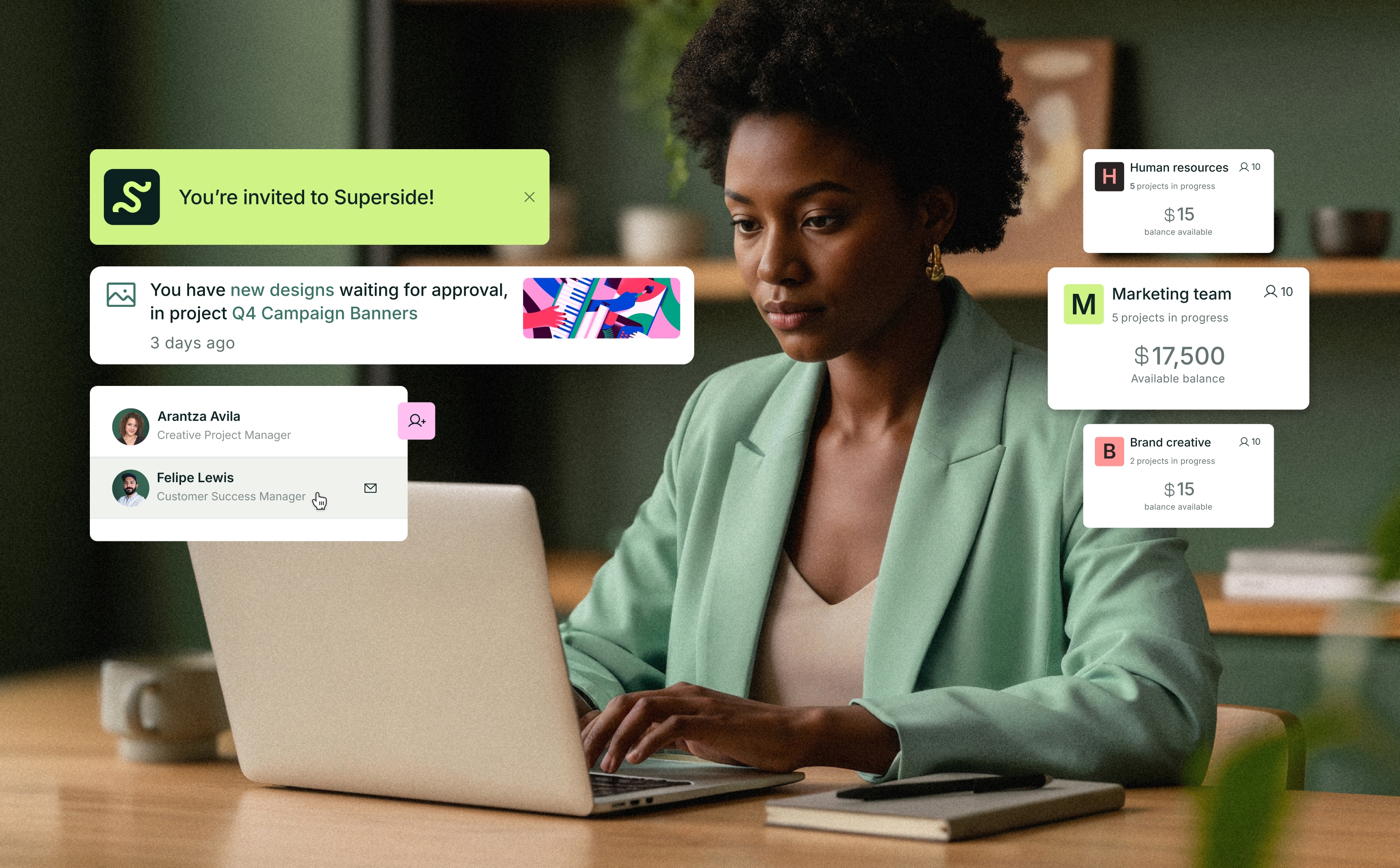
One of the main reasons companies rebrand is to realign with customer expectations. Over the past few years, these expectations have changed dramatically.
Two of the main forces at play are the increasing number of digital interactions at almost every touchpoint and rising levels of personal awareness and social consciousness.
As a result, brands must be even more clear about how their brand experience aligns with these transformations.
Source: PwC June 2021 Global Consumer Insights Pulse Survey
Let's dive in
A 3-Step Rebranding Strategy for Succes
A Checklist for Outsourcing Rebranding Services
Company Rebranding Examples Inspired by Digital and Social Transformation
To Rebrand or Not to Rebrand? Choose Wisely
Should Your Company Rebrand?
That’s the million-dollar question. When deciding to change your brand in any way—you must be extraordinarily strategic—keeping your audience top of mind. After all, the whole purpose of your brand experience is to win their hearts and minds—a process that’s a unique mix of strategy, intuition and magic!
A promise is a promise
Your brand represents your promise to your customers. Whether they’re B2B or B2C, nearly half of all customers feel more comfortable and willing to pay more to purchase from brands they trust. When you consider that most people form an opinion about your brand within 50 milliseconds of visiting your website—keeping your promises is crucial.
What’s in a name? Why Superside rebranded
One of the reasons Superside rebranded in 2019 was because no one understood our original name—Konsus. Truthfully, our founders had made it up quickly during launch and realized that it wasn’t resonating with customers.
Our new name “Superside” is an extension of our brand promise to banish bottlenecks and democratize access to scalable graphic design services. Super means strength and side implies using all sides of the globe to deliver great work.
Building on this value system, our interstellar imagery and illustration further underscore the stratospheric heights we aim to reach. This identity also delivers on the fun, playful spirit that our customers crave.
Speaking of a creative and light-hearted approach, this video captures the essence of our rebrand and the questions you should consider if you’re thinking of a rebrand of your own.
A 3-Step Rebranding Strategy for Success
If you’re considering rebranding, there are three key steps you need to take. First, you’ll need to build a business reason for the rebrand itself. Then, develop a detailed plan that covers everything from start to finish. And, finally, you’ll want to be prepared to measure results so you can determine what’s working and what isn’t—pivoting as needed.
1. Build a business reason for why you need to rebrand
Every good strategy starts by asking, “Why?” You know that a rebrand has to make sense to your audience. Meanwhile, dollars and sense will also matter to your boss and your boss’ boss. Conducting a brand audit, before investing time and resources into a rebrand, will help you determine which factors are driving the need for change, such as:
Knowing your reasons for rebranding will help you clearly identify your goals and frame your overall strategy. It’ll also give you benchmarks for prioritizing tactics and measuring performance.
2. Create an end-to-end rebranding plan
As U.S. Founding Father Ben Franklin would say, “By failing to prepare, you’re preparing to fail.” Almost any project manager worth their salt would also back you up on that one. Your comprehensive rebranding approach should include:
- Which parts of your brand you’re changing and why. Are you just adjusting your visual identity or are you starting from scratch? Will you apply the rebrand to everything your brand touches? All your requirements should be listed and prioritized into what’s needed for the launch and subsequent phases.
- Your goals and objectives. State what you’re hoping to achieve, when you plan to reach each milestone and how you intend to measure them. For instance, if your goal is to reach new customers, which metrics (share of voice, sentiment, cost-per-acquisition (CAQ), etc.) do you plan to measure and how often do you plan to evaluate the reporting?
- Engage internal stakeholders. Even if you’re leading this effort, a rebrand touches many parts of a business. Fellow stakeholders, like sales, marketing and customer success, may also provide helpful feedback and insights. They can even help you identify items you might have overlooked, such as updating your 404 page.
- Set timelines and budgets. Put together solid estimates of how long each process will take and how much it will cost. After all, no one likes surprises, especially expensive ones.
- Allocate resources. Determine if you’ll be able to manage your rebrand in-house or if you’ll need to outsource any rebranding services. A total rebrand can get pretty big pretty fast. Even a refresh can create a wave of assets to be updated.
3. Measure, Learn and Refine
Instinct is one thing, but data helps you substantiate your claims and validate your company’s rebranding strategy. Setting up measurement systems and processes is key. As results come in, don’t be afraid to reassess or redirect. While there’s a bit of science to branding, there’s also a lot you can learn through experimentation.
A Checklist for Outsourcing Rebranding Services
Your internal teams are heroes. But sometimes, even heroes need help. When you’re choosing between an agency or an outsourced design service, like Superside, consider:
But wait! What about a brand "refresh"?
Good question—for the purists out there, a brand refresh is distinct from a rebrand. A few tweaks here or there without changing the core identity could be considered less than a full rebrand. In a recent Gather and Grow, our Marketing Creative Director, Piotr Smietana dove into this topic.
Examples of Company Rebranding and Brand Refreshes Inspired by Digital and Social Transformation
People are viewing brands through new lenses and companies are revising their brand promises and positioning to ensure they’re in touch with customer needs and perspectives. Technology permeates nearly every aspect of the brand experience from discovery to post-purchase, while social awareness shapes decisions in ways it never has before.
Burger King—What’s old is new and more authentic
Design is one of the most essential tools we have for communicating who we are and what we value, and it plays a vital role in creating a desire for our food and maximizing guests’ experience.
In 2021, Burger King undertook its first major rebrand in 20 years modernizing its appearance and signaling a new digital-first expression. It also wanted to better align with its new brand values, such as its decision to remove all artificial colors and preservatives from its menu.
The company’s complete rebrand, the result of 18 months of close collaboration with brand agency Jones Knowles Ritchie, encompassed every touchpoint from the company logo down to employee uniforms. In a nod to technology, even the company’s mobile app got a facelift and the company plans to build double drive-through lanes at most of its North American restaurants. (Yep, Europe, we really like our cars. Probably a little too much.)
Taking inspiration from the restaurant’s signature Whopper hamburger and paying homage to more authentic ingredients, the new organic color pallet included yellow, brown, red and orange. Even the name of the brand font “Flame” was pulled from the brand story.
Ditching dated 90s-era swooshes and gradients, the new logo features a more simple design—reflecting the authenticity that modern customers crave. Although, fans and a few naysayers, will point out that the new logo bears a close resemblance to earlier iterations. Personally, I’m glad they kept the paper crowns. #nostalgia
Aunt Jemima—Social change leads to brand change
As we work to make progress toward racial equality through several initiatives, we also must take a hard look at our portfolio of brands and ensure they reflect our values and meet our consumers' expectations.
As emotionally charged conversations on race came to the forefront in 2020, Quaker Foods, parent company of the 130-year-old Aunt Jemima brand, realized it was time to make a change. Packaging for the pancake and syrup packages featured an African American stereotype that was no longer socially acceptable.
The images of Aunt Jemima were removed and the brand name was changed to Pearl Milling Company, the name of the company that created the original brand. However, the iconic red remained to create continuity during the rebrand—making it easier for shoppers to find the products on the shelves. As you see, with the right rebranding strategies, any restaurant management and food service chain can succeed.
Quaker Foods also created a community funding initiative to support nonprofit organizations that uplift Black women and girls with grants of up to $100,000 USD.
While the rebrand garnered significant media attention, the success of the rebrand will be told over time. A 2021 Ad Age-Harris poll found that 66% of consumers were aware of the change, but only 23% said it would make them more likely to buy the products.
Have other brands followed suit? Yes, North American shoppers familiar with Uncle Ben’s rice mixes will notice that the controversial figurehead is no longer pictured on the packaging and the name is now Ben’s Original.
Kia—Change with purposeful direction
At Kia, we believe that transportation, mobility and movement represent a human right. Our vision is to create sustainable mobility solutions for consumers, communities and societies globally.
In January 2021, Korean automaker Kia launched a full rebrand. The full scope of the company rebranding included brand purpose, corporate mission, business direction, product design philosophy and working culture. They even took the word “motors” out of their company name.
Kia’s new logo and tagline. Symbolizing a handwritten signature, the new logo is a rhythmical, unbroken line that signals the company’s commitment to delivering moments of inspiration. Its symmetry conveys confidence, while the peaks of each letter represent higher ambitions. The new tagline, “Movement that inspires” encapsulates the new ethos.
Part of a global strategy to elevate Kia, the rebrand aims to help the automaker build a reputation for innovation—surpassing its established reputation for affordability. In Q4 2021, the company saw significant gains in the European market, seizing 5.4% of the passenger car market. So far, it looks like they’re headed in the right direction.
To Rebrand or Not to Rebrand? Choose Wisely
Rebranding helps you align with your customers and changing market conditions. When done well, you also see results through greater customer engagement and increased revenue. Get it wrong, and in addition to winding up as a case study of what not to do, you’ll spend even more time fixing the mistakes.
The good news: You don’t have to do this alone. Learn how Superside can help you evaluate and reinvigorate your brand strategy. We’ve helped brands like Amazon, Puma and Prime Gaming and we can be there for you.












